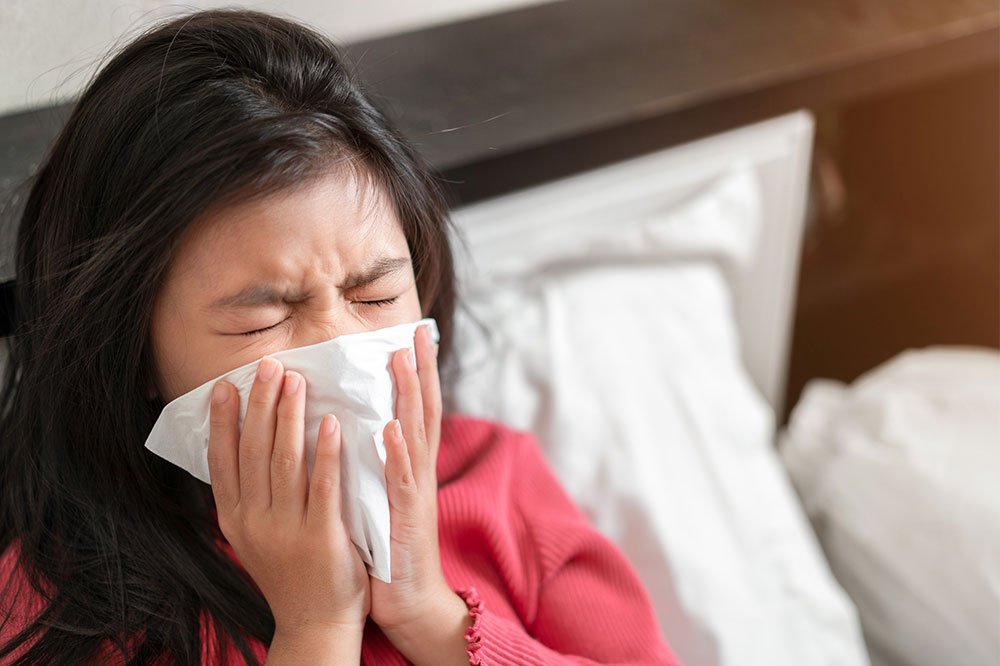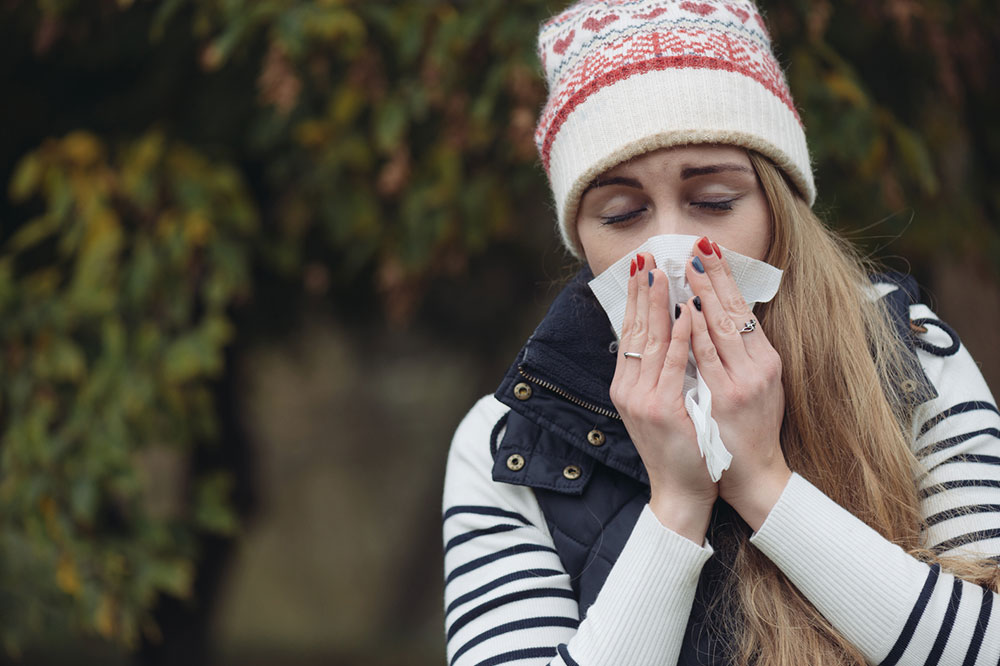Comprehensive Guide to Cold, Flu, Cough, and Viral Infections: Recognizing Symptoms, Understanding Stages, and Effective Prevention Strategies
This comprehensive guide explores the causes, symptoms, stages, and prevention methods for cold, flu, cough, and viral respiratory infections. It emphasizes early recognition, effective home remedies, medical advice, and preventive measures like vaccination and hygiene practices to reduce infection risks and manage symptoms efficiently. Staying informed and proactive can help you navigate seasonal illnesses with confidence and maintain optimal respiratory health.

Comprehensive Guide to Cold, Flu, Cough, and Viral Infections: Recognizing Symptoms, Understanding Stages, and Effective Prevention Strategies
Viral respiratory infections are among the most common illnesses worldwide, with colds, influenza (flu), coughs, and various other viral diseases affecting millions each year. These ailments often present overlapping symptoms, making it challenging to distinguish one from another without proper understanding. Recognizing the differences, symptoms, stages, and prevention methods is essential in managing these illnesses effectively. In this comprehensive guide, we delve deeply into the causes, symptoms, progression, and preventive measures related to common cold, flu, cough, and other viral infections.
Understanding the nuances of these illnesses helps in early detection and appropriate response. While they often share symptoms, the severity, duration, and specific signs can vary significantly. Identifying these key differences not only informs better health decisions but also prevents unnecessary antibiotic use, as most viral infections do not respond to such medications.
Common Causes of Cold, Flu, Cough, and Viral Respiratory Infections
The primary culprits behind these illnesses are viruses. Over 200 different virus types have been identified as causes of the common cold, with rhinoviruses being the most prevalent. Influenza viruses cause seasonal flu outbreaks, while other viruses such as adenoviruses, parainfluenza, respiratory syncytial virus (RSV), and coronaviruses can also lead to respiratory illnesses.
Most of these viruses are transmitted through respiratory droplets when an infected person coughs, sneezes, or talks. Touching contaminated surfaces and then touching the face—mouth, nose, or eyes—also facilitates infection. Crowded places, poor hygiene, and seasonal changes create ideal conditions for viral spread.
Symptoms: Differentiating Cold, Flu, and Other Viral Infections
Common Cold: Mild symptoms that typically develop gradually, including runny nose, nasal congestion, sneezing, sore throat, and coughing. Fever is uncommon but may occur in children. Fatigue and mild body aches are possible.
Seasonal Flu: More severe symptoms that develop quickly, often within 1-3 days after exposure. Common signs include high fever, intense fatigue, muscle and body aches, headache, sore throat, cough, and chills. The flu can lead to complications like pneumonia, especially in vulnerable populations.
Cough and Viral Respiratory Infections: Cough can be a primary symptom across various infections. It may be dry or productive, depending on the virus and infection stage. Viral bronchitis and other respiratory illnesses can also present with chest discomfort, shortness of breath, and wheezing.
The Stages of Viral Respiratory Illnesses
The progression of cold, flu, and other viral infections can be broken down into distinct phases, although individual experiences may vary:
Incubation Period: Symptoms usually appear within 1 to 3 days post-exposure, sometimes as early as 12 hours. During this phase, the virus is replicating, but symptoms are not yet evident.
Symptom Peak: The severity of symptoms generally reaches its height around days 1 to 3. During this phase, cough, sneezing, nasal congestion, muscle aches, and fever are most intense.
Resolution Phase: As the immune system fights off the virus, symptoms gradually diminish over 3 to 10 days. Mucus changes color from clear to yellow or green, indicating immune activity, but this does not necessarily signify bacterial infection.
In some cases, residual fatigue or cough may persist for up to two weeks. Recognizing these stages can help patients manage expectations and seek appropriate care when necessary.
Diagnosis and Medical Evaluation
Most viral respiratory infections are diagnosed based on clinical symptoms and patient history. Doctors may perform physical examinations, listening to the lungs and checking for signs of complications.
In complicated cases or for severe symptoms, additional tests such as chest X-rays, rapid influenza diagnostic tests (RIDT), or molecular assays (PCR tests) can confirm the specific virus type and rule out bacterial infections or other health issues.
Effective Treatment and Symptom Relief
Since most cold and flu viruses are self-limiting, treatment primarily focuses on alleviating symptoms rather than curing the illness directly. Over-the-counter medications like analgesics (acetaminophen, ibuprofen), decongestants, antihistamines, and cough suppressants can ease discomfort.
Home remedies such as warm fluids, rest, steam inhalation, and throat lozenges can also support recovery. It's crucial to avoid antibiotics unless bacterial superinfection is confirmed, as antibiotics are ineffective against viruses and misuse can lead to antimicrobial resistance.
Preventive Measures to Reduce Infection Risk
Prevention is key in controlling the spread of viral respiratory illnesses. Several effective strategies include:
Avoid Close Contact with Infected Individuals: Maintaining distance from those showing signs of illness can significantly lower your risk of infection.
Practice Good Hygiene: Cover your mouth and nose with a tissue or elbow when coughing or sneezing to prevent germ dissemination.
Regular Handwashing: Wash hands thoroughly with soap and water for at least 20 seconds or use alcohol-based hand sanitizer frequently, especially after touching surfaces outside your home.
Disinfect Common Surfaces: Regularly clean doorknobs, light switches, mobile devices, and other high-touch items.
Maintain a Healthy Lifestyle: A balanced diet, adequate sleep, regular exercise, and stress management support immune health.
Vaccination: Annual influenza vaccines are highly recommended, especially for vulnerable groups such as the elderly, young children, and those with pre-existing health conditions.
When to Seek Medical Attention
While most viral infections resolve within a week or two, certain symptoms warrant prompt medical care, including:
High fever lasting more than three days
Shortness of breath or chest pain
Persistent or worsening cough
Signs of dehydration, such as dizziness or decreased urination
Confusion or severe fatigue
Early intervention can prevent complications and expedite recovery, especially in high-risk individuals.
Conclusion
Understanding the differences between cold, flu, cough, and other viral infections empowers individuals to recognize early symptoms, seek appropriate treatment, and implement effective prevention strategies. With proper hygiene, timely vaccination, and symptom management, the impact of these illnesses can be minimized, keeping you and your loved ones healthier during seasonal outbreaks and beyond.





